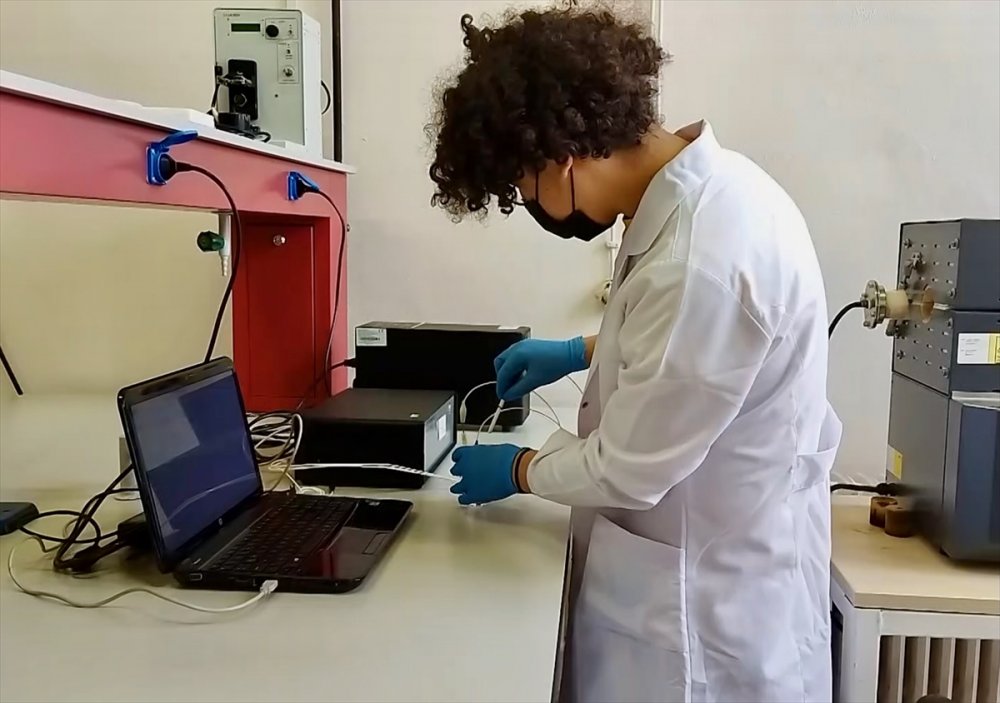Major Development in Renewable Energy; Generated Electricity from Oregano Oil

Erkan Kaya, a 10th grade student at Eskisehir Ataturk Fine Arts High School Music Department, started doing research on thyme he grew at home because he liked its smell. Learning that the thymol in thyme is used in the pharmaceutical industry, Kaya realized that the substance in question could also act as a catalyst to generate electricity.
Eskisehir Osmangazi University (ESOGÜ) Faculty of Arts and Sciences, Department of Chemistry Lecturer Prof. Dr. Kaya, who started working under the consultancy of Arif Kivrak, developed a project titled ‘The use of natural product thyme in the clean energy fuel cell of the future’.
In the measurements he made after thymol was sprayed on a special paper and dried, Kaya proved that electrons emerged and electricity was produced as a result. Erkan Kaya, with his project in the 53rd High School Students Research Project Competition organized by the Scientific and Technological Research Council of Turkey (TUBITAK), came in second in the field of chemistry at the regional stage in Bursa.

‘I created renewable energy’
Erkan Kaya stated that he was interested in science from an early age and said that he saw fine arts and science as categories close to each other.
Explaining that he has grown thyme in his house for 3 years, Kaya said:
‘The smell is very influencing to me. That’s why I did some research on thyme. I learned that the volatile aromatic thymol oil in thyme is widely used in the pharmaceutical industry. In my research, I noticed that thymol also creates energy as a catalyst through a chemical reaction. The idea of using thymol as energy developed. Normal lithium-ion batteries use metals as catalysts. These metals have harmful effects on the environment and humans. I also created renewable energy by using the organic component called ‘thymol’ in the natural product thyme as a catalyst. With the measurements I made with the potentiostat device, we measured that the thymol in the thyme produces electricity. We obtained electrons by spraying thymol on the Nafion polymer and drying it. We provide electrical energy with these electrons.’
Kaya thanked the school administration and teachers for the support given to him.
Project consultant and ESOGU Faculty of Arts and Sciences Department of Chemistry Lecturer Prof. Dr. Arif Kivrak also mentioned that the need for energy has increased with the increase in population and the growth of industry in the world.
Reminding that the majority of energy needs are provided by fossil resources such as coal, natural gas and oil, Kivrak said: ‘Oil, one of today’s most used energy resources, and events such as oil spills caused by them are irreparably destroying the ecosystem. As a result of the intense use of fossil fuels, the gases that cause environmental pollution have increased over time and started to harm our world. Therefore, environmental pollution is one of the most important problems of today. It is imperative to discover and use new and innovative technologies for a cleaner environment.’

‘It showed that energy can be produced without harming the environment and nature’
Kivrak stated that Kaya’s project was designed for clean energy and green environment and stated that renewable energy can be defined as energy obtained from unlimited sources.
Stating that it is essential to use alternative energy sources effectively for a cleaner future, Kivrak said: ‘Solar energy, wind energy, water energy can be given as the best examples of renewable energy sources. Fuel cells, one of the alternative energy sources, are a renewable clean energy source that converts chemical energy into electrical energy. Thyme, which is abundant in our country and in the world, is a plant that people love and use for many years in food and cosmetic products due to its smell. Thymol, obtained from the thyme plant, is an aromatic oil with volatile properties and is used in the treatment of different diseases.
In the project, the use of thymol, which is obtained from thyme oil, which is abundant in Turkey, as an anode catalyst for hydrazine fuel cells and its effect on catalytic activity were investigated. According to the results of cyclic voltammetry, an electrochemical method, it was observed that thymol obtained from thyme oil increased the catalytic activity in hydrazine electrooxidation. This makes thymol a promising anode catalyst for direct hydrazine fuel cells. It shows that energy can be produced without harming the environment and nature in order to obtain clean energy.’






